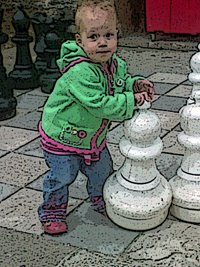


And it sort of worked. I kind of enjoyed it. It was different, and the whole card table baize, billiard ball and dice thing that were actually just quick placeholders also worked for me. But I knew there were problems. The random reset of the first frame made things too random, so that any sense of careful progression or the exercise of skill was undermined. Not always, but often enough. But did I throw it away and do something more useful? Nope. I did this:


More images at my Photobucket.
Which kind of works. It has got penguins in it and is a casual computer game – how could it fail? But it suffers from exactly the same problems that the prototype reveals. And yet I built it anyway. I keep twitching it and trying to get it to really work, but I am still left with the feeling that the only lesson I have really learned is that prototyping is supposed to get you to throw things away when they fail, not keep and keep worrying away at.

No comments:
Post a Comment